HowToCook.news – Your Ultimate Guide to Delicious Cooking!
Mastering Meal Planning: A Comprehensive Guide to Cooking by Meal Type
Mastering Meal Planning: A Comprehensive Guide to Cooking by Meal Type
Table of Contents
Introduction:
- Hook: Start with a compelling question or statement to engage the reader.
- Example: “Have you ever felt overwhelmed by meal planning or stood in front of your pantry wondering, ‘What do I make now?’ It’s a common issue. But what if there was a simple way to structure your cooking around the different times of the day, so you could eat healthy, save time, and feel more organized?”
- Purpose: Mention how this article will walk readers through the concept of organizing meals by type, and how it will offer tips, recipes, and advice for each category, so they can eat mindfully and make better meal choices.
- Example: “In this guide, we’ll break down how to approach breakfast, lunch, dinner, snacks, and special meals, helping you plan your week with ease. Plus, we’ll include meal prep ideas and tips for various dietary preferences!”
1. Breakfast: Kickstart Your Day with Energy
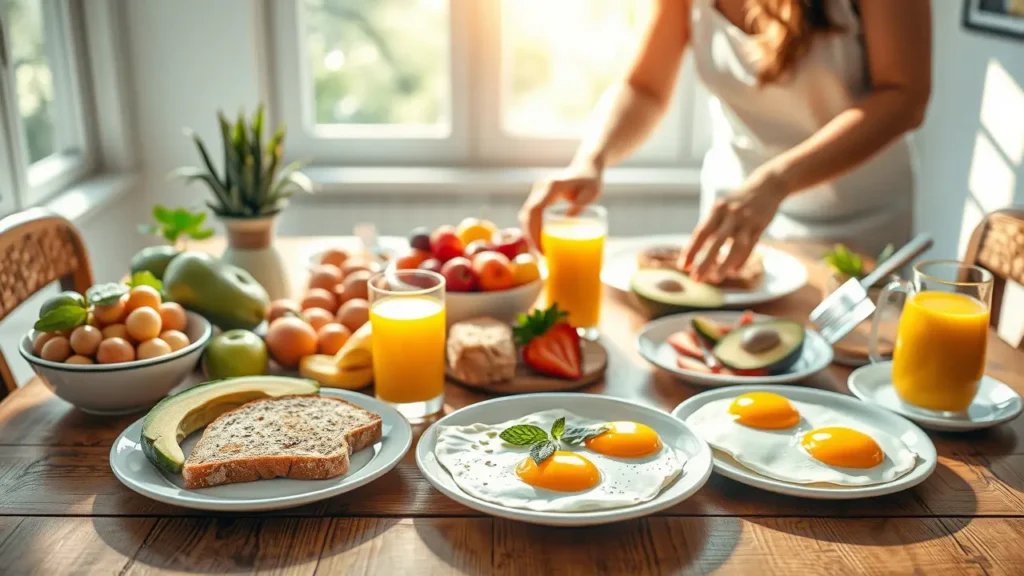
- Overview: Breakfast should fuel the body after a night’s fast, providing essential nutrients to jumpstart metabolism and sustain energy levels. A balanced breakfast is a cornerstone of healthy eating.
- Nutritional Breakdown:
- Protein: Helps with muscle recovery and satiety. Include lean options like eggs, yogurt, or plant-based proteins.
- Complex Carbs: Slow-releasing carbs provide sustained energy without blood sugar spikes (e.g., whole grains, oats, fruits).
- Healthy Fats: Supports brain function and keeps you full longer (e.g., avocado, nuts, seeds).
- Fiber: Vital for digestion and gut health (e.g., fruits, whole grains).
- Quick & Easy Options:
- Overnight Oats: Soak oats in milk or yogurt overnight, then add chia seeds, fruit, and a drizzle of honey in the morning.
- Greek Yogurt Parfait: Layer yogurt, granola, fresh berries, and seeds for a nutrient-packed meal.
- Avocado Toast: Whole grain toast topped with smashed avocado, a poached egg, and a sprinkle of chili flakes.
- Smoothies: Blend spinach, banana, protein powder, and almond milk for a quick breakfast on the go.
- Tip: If you’re in a rush, make your breakfast the night before, like overnight oats or pre-portion smoothies. This helps save time while still nourishing your body.
2. Lunch: Fueling the Midday Slump
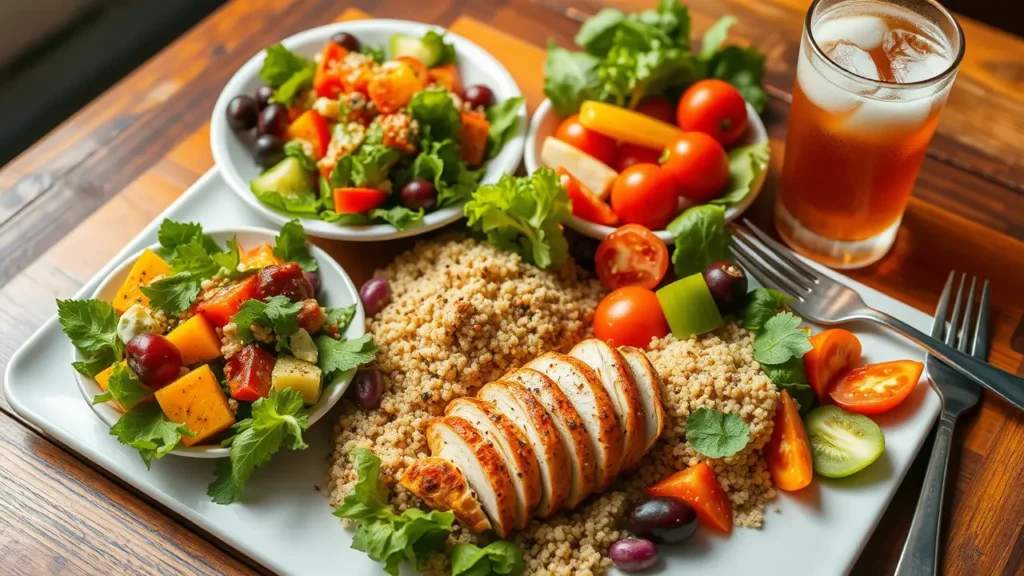
- Overview: Lunch needs to be filling enough to provide energy for the afternoon but not too heavy to avoid the dreaded post-lunch slump. It’s essential to include a balance of macronutrients.
- Nutritional Breakdown:
- Lean Proteins: Chicken, turkey, tofu, and legumes help maintain muscle mass and control hunger.
- Complex Carbs: Brown rice, quinoa, and sweet potatoes are excellent sources of slow-releasing energy.
- Vegetables: Leafy greens and colorful veggies offer a wide range of vitamins, minerals, and fiber.
- Healthy Fats: Olive oil, nuts, and avocado provide necessary fat for cell function and brain health.
- Quick & Balanced Recipes:
- Grain Bowls: Mix a base like quinoa or rice with grilled chicken, roasted vegetables, and a tahini or yogurt dressing.
- Salad Wraps: Fill a whole wheat wrap with grilled veggies, hummus, quinoa, and a protein of your choice.
- Vegetable Stir-Fry: A quick stir-fry of broccoli, bell peppers, and snap peas served over brown rice or noodles.
- Chickpea Salad: Combine chickpeas, cucumbers, tomatoes, onions, and a simple lemon-olive oil dressing for a fresh, filling lunch.
- Tip: If you’re working from home, batch-cook your lunch to ensure you don’t spend too much time preparing it. A big salad or grain bowl can be prepped in advance and stored for the next few days.
3. Dinner: Nourishing Your Body for the Night
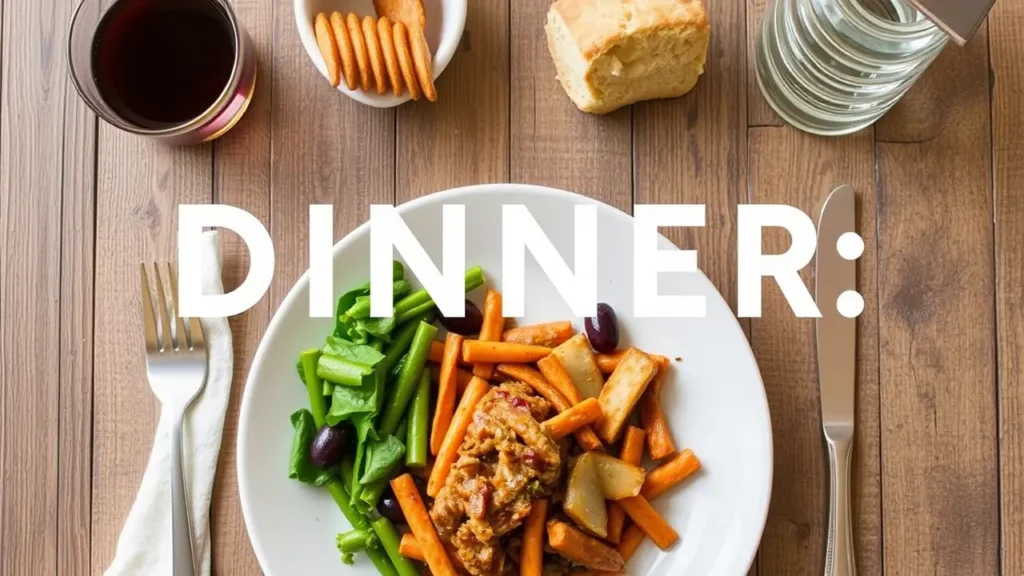
- Overview: Dinner is often the largest meal of the day and should be balanced with proteins, carbs, and vegetables. Since it’s closer to bedtime, meals should focus on promoting recovery and better sleep.
- Nutritional Breakdown:
- Lean Proteins: Opt for lighter meats (chicken, turkey) or plant-based proteins (lentils, beans, tofu).
- Fiber-Rich Vegetables: Aim for a variety of vegetables, both for their micronutrients and fiber.
- Carbs: Choose whole grains or starchy vegetables like potatoes or sweet potatoes, which can help replenish glycogen stores and keep you full overnight.
- Healthy Fats: Include moderate fats like olive oil, nuts, or fatty fish like salmon for heart health.
- Creative and Cozy Dinner Ideas:
- Grilled Salmon with Asparagus: Serve with roasted sweet potatoes or quinoa for a nutrient-packed meal.
- Spaghetti Bolognese: Swap traditional pasta for zucchini noodles or whole wheat pasta and pair with a lean meat or veggie-based sauce.
- Veggie-Packed Stir Fry: Tofu or chicken stir-fried with a mix of colorful vegetables and served with brown rice.
- Chicken or Veggie Curry: A coconut milk-based curry with chickpeas, spinach, or chicken served with brown rice.
- Tip: Keep dinner relatively light on heavy carbs (like white pasta) if you’re eating closer to bedtime. Focus more on proteins and vegetables.
4. Snacks: Keep Energy Levels Steady Between Meals
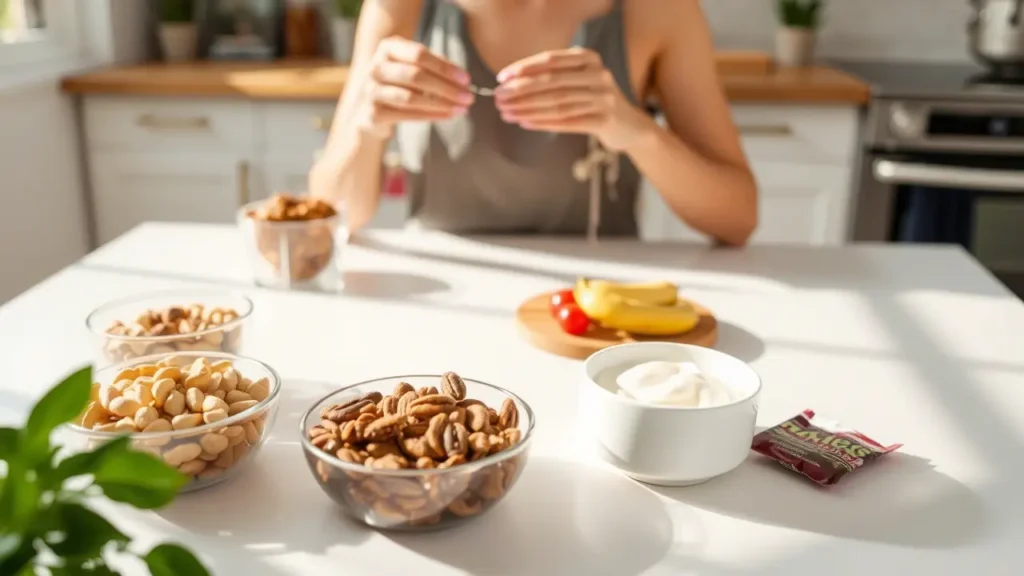
- Overview: Snacks are designed to keep you fueled between meals and prevent overeating at main meals. Ideal snacks should combine protein, healthy fats, and fiber to keep you satisfied.
- Nutritional Breakdown:
- Protein: Helps with muscle repair and satiety.
- Fiber: Improves digestion and helps control hunger.
- Healthy Fats: Keeps you feeling full and supports brain function.
- Carbs: A small amount of healthy carbs is okay for sustained energy.
- Smart Snack Options:
- Hummus & Veggies: Carrot sticks, celery, and cucumber slices paired with hummus.
- Greek Yogurt with Almonds: A handful of almonds added to Greek yogurt for protein and healthy fat.
- Energy Balls: Homemade energy balls made from oats, peanut butter, and honey.
- Apple & Peanut Butter: Apple slices with a tablespoon of peanut or almond butter for a balanced snack.
- Boiled Eggs: Quick and easy protein-packed snack that can be prepped in advance.
- Tip: Prepare individual snack portions in advance (like portioning nuts or chopping veggies) to avoid mindless snacking.
5. Special Occasion Meals: Celebrating with Flavor

- Overview: Special occasion meals are usually more indulgent and celebratory, yet they can still be balanced by incorporating wholesome ingredients alongside indulgent treats.
- Key Principles:
- Moderation: You don’t have to sacrifice flavor or indulgence—just keep portion sizes reasonable and balance rich dishes with lighter sides.
- Seasonal Ingredients: Use in-season produce to elevate flavors without extra effort.
- Ideas for Special Occasions:
- Roast Turkey for Thanksgiving: Serve with a homemade cranberry sauce, mashed cauliflower, and roasted root vegetables.
- Grilled Steak with Herb Butter: Serve with a side of sautéed green beans and baked potatoes.
- Vegetarian Lasagna: Layered with spinach, mushrooms, and a light ricotta cheese filling for a hearty, flavorful dish.
- Homemade Cake: A light, flourless chocolate cake or carrot cake with a cream cheese frosting for a healthier twist.
- Tip: For large gatherings, serve a mix of rich and lighter dishes, so guests can pick and choose.
6. Pre/Post-Workout Meals: Support Your Fitness Goals
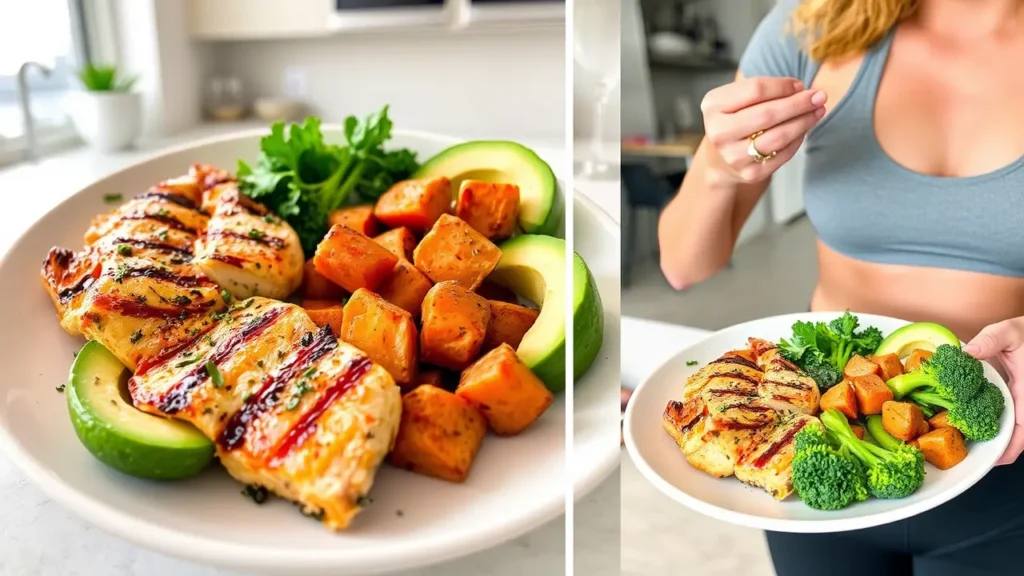
- Overview: Pre- and post-workout meals focus on fueling the body before a workout and aiding recovery afterward.
- Pre-Workout: Should focus on carbs for energy, with a small amount of protein.
- Examples: Whole grain toast with peanut butter, banana with almond butter, oatmeal with berries.
- Post-Workout: A mix of protein and carbs to rebuild muscles and replenish energy.
- Examples: Grilled chicken with quinoa, protein shake with fruit, or scrambled eggs with avocado.
- Tip: Eat pre-workout meals at least 30 minutes to an hour before exercise and post-workout meals within an hour after your workout for optimal results.
7. Meal Prep: Plan and Cook Ahead for Busy Weeks
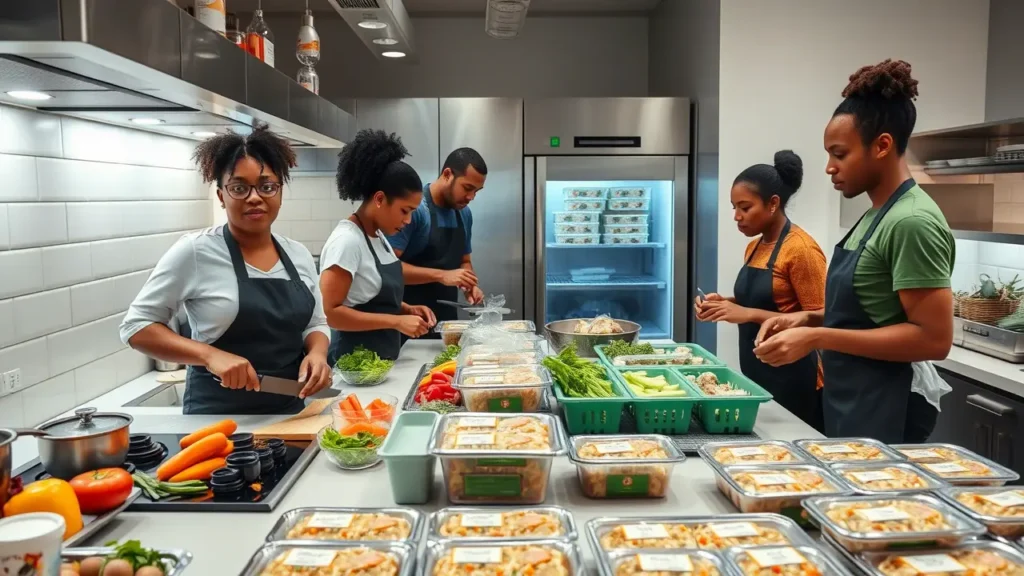
- Overview: Meal prep allows you to save time, eat healthier, and reduce the temptation of unhealthy takeout or fast food.
- Key Principles:
- Batch Cooking: Cook larger portions of proteins, grains, and veggies that can be repurposed for different meals throughout the week.
- Storage: Invest in good-quality, BPA-free containers that will keep your meals fresh for up to five days.
- Tips for Success:
- Cook in bulk: Make a large pot of quinoa or rice, grill multiple chicken breasts, or roast several trays of veggies.
- Portion out meals: Use mason jars or containers to pre-portion meals like salads, grains, or soups.
- Example Meal Prep Recipes:
- Quinoa Bowls: Grilled chicken, quinoa, roasted veggies, and a dressing of your choice.
- Mason Jar Salads: Layer dressing at the bottom, followed by hearty vegetables, protein (chicken, chickpeas), and greens on top.
- Soup & Stews: A big batch of lentil soup or chili can be frozen in portions for later.
- Tip: Dedicate a couple of hours each week to meal prep, and you’ll save time and energy on busy days.
Conclusion:
By structuring your meals around these categories, you’ll eat more mindfully and ensure you’re getting a variety of nutrients throughout the day. Organizing meals by type helps you plan, making it easier to stick to healthier eating habits and minimize stress around meal planning. Whether you’re fueling your day, preparing for a workout, or celebrating with friends, there’s a meal type for every occasion.
Breakfast: Kickstart Your Day with Energy
These Are The Best Snacks For a Faster Metabolism, Say Dietitians




